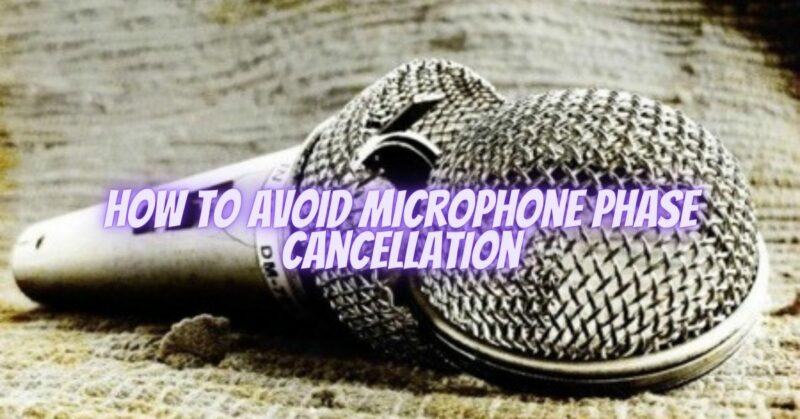Microphone phase cancellation is a common issue that can negatively impact the quality of audio recordings. It occurs when two or more microphones capture the same sound source but are out of phase with each other, resulting in a reduction or cancellation of certain frequencies. This phenomenon can lead to a thin or hollow sound, loss of clarity, and an overall undesirable audio experience. In this article, we will discuss techniques and tips to help you avoid microphone phase cancellation and achieve optimal audio recording results.
- Proper Microphone Placement: One of the fundamental ways to prevent phase cancellation is to carefully consider the placement of your microphones. When using multiple microphones to capture the same sound source, such as in a stereo recording setup or during a live performance, ensure that the microphones are positioned equidistant from the sound source. This will help minimize the time differences in sound arrival and reduce the chances of phase cancellation.
- Use the 3:1 Rule: The 3:1 rule is a guideline commonly followed in audio recording to prevent phase cancellation when using multiple microphones. According to this rule, the distance between microphones should be at least three times the distance from each microphone to the sound source. This spacing helps minimize the phase differences caused by sound wave arrival times and reduces the chances of cancellation.
- Selecting Appropriate Microphone Polar Patterns: Different microphone polar patterns have varying sensitivity to sound arriving from different angles. When using multiple microphones, it is essential to choose microphones with appropriate polar patterns for the desired sound capture. For example, using cardioid or supercardioid microphones with good rear rejection can help minimize phase cancellation when positioning microphones in close proximity.
- Adjusting Microphone Phase: If you encounter phase cancellation issues during a recording session, you can try adjusting the phase relationship between the microphones. Most audio interfaces or mixers provide phase inversion switches for individual microphone channels. Experiment with flipping the phase (180-degree phase shift) on one of the microphones and listen for any improvement in the overall sound. Sometimes, a simple phase adjustment can effectively mitigate cancellation issues.
- Utilize Time-Alignment Techniques: Time-alignment techniques can help compensate for any inherent time delays between different microphones and prevent phase cancellation. This is particularly relevant when using a combination of close and distant microphones or in scenarios where a sound source is picked up by microphones at different distances. By carefully adjusting the timing or delaying the signal of certain microphones, you can ensure that all microphones capture the sound in sync, reducing the chances of phase cancellation.
- Monitor and Listen Carefully: During recording or live performances, it is crucial to actively monitor and listen to the audio being captured by different microphones. Use headphones or studio monitors to listen for any phase cancellation artifacts or undesirable sound changes. By being attentive and aware of any potential issues, you can make real-time adjustments to microphone placement, phase settings, or time-alignment techniques to address phase cancellation and improve audio quality.
Conclusion: Microphone phase cancellation can significantly impact the audio quality of recordings, leading to a loss of clarity and undesirable sound artifacts. By employing proper microphone placement, adhering to the 3:1 rule, selecting appropriate polar patterns, adjusting microphone phase, utilizing time-alignment techniques, and actively monitoring the audio, you can effectively avoid phase cancellation and achieve optimal audio recording results. Remember, attention to detail and a thoughtful approach to microphone placement and configuration are key to ensuring high-quality audio capture and avoiding phase cancellation issues.


